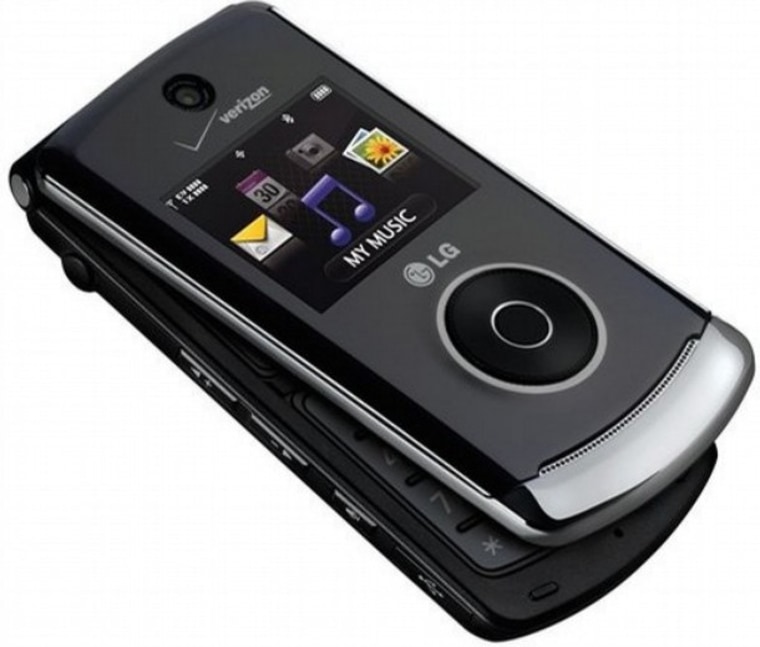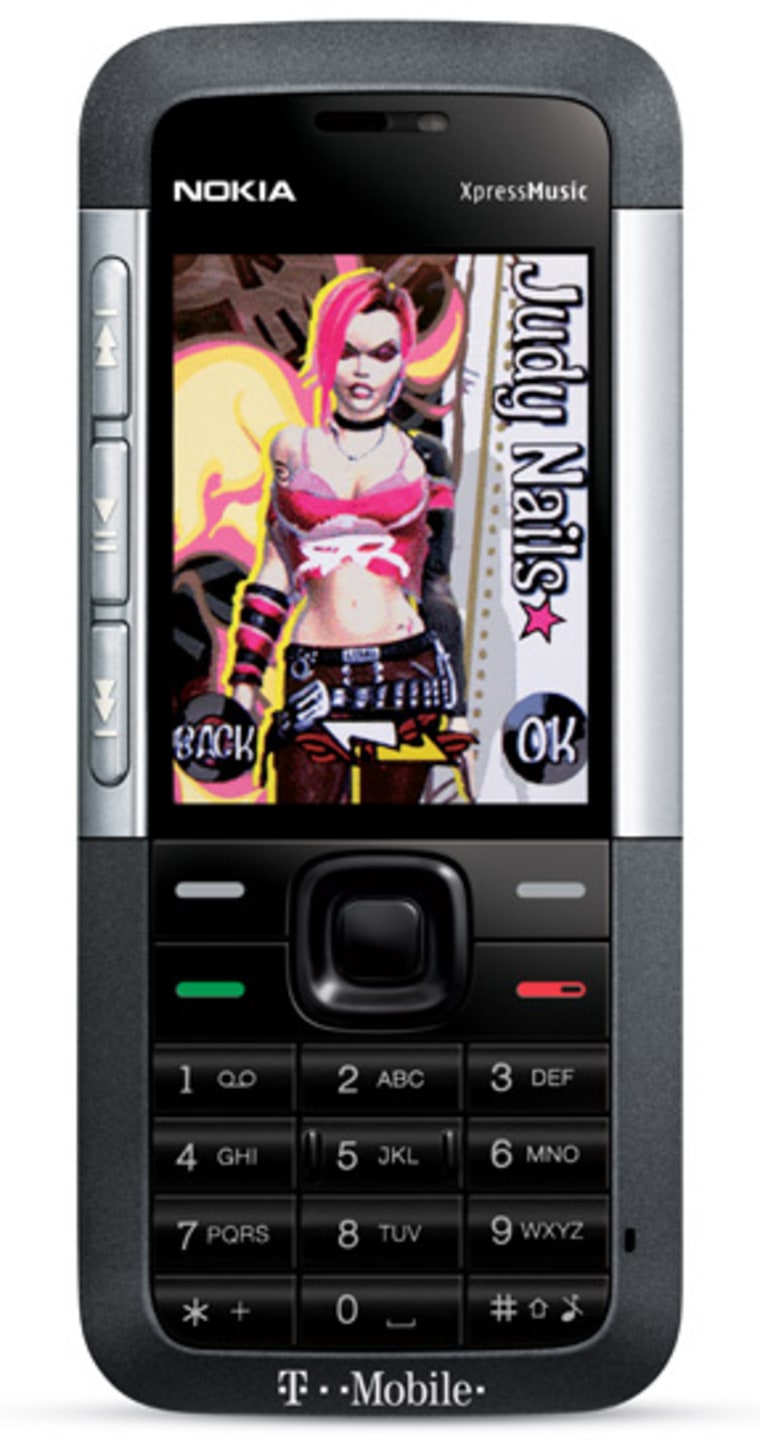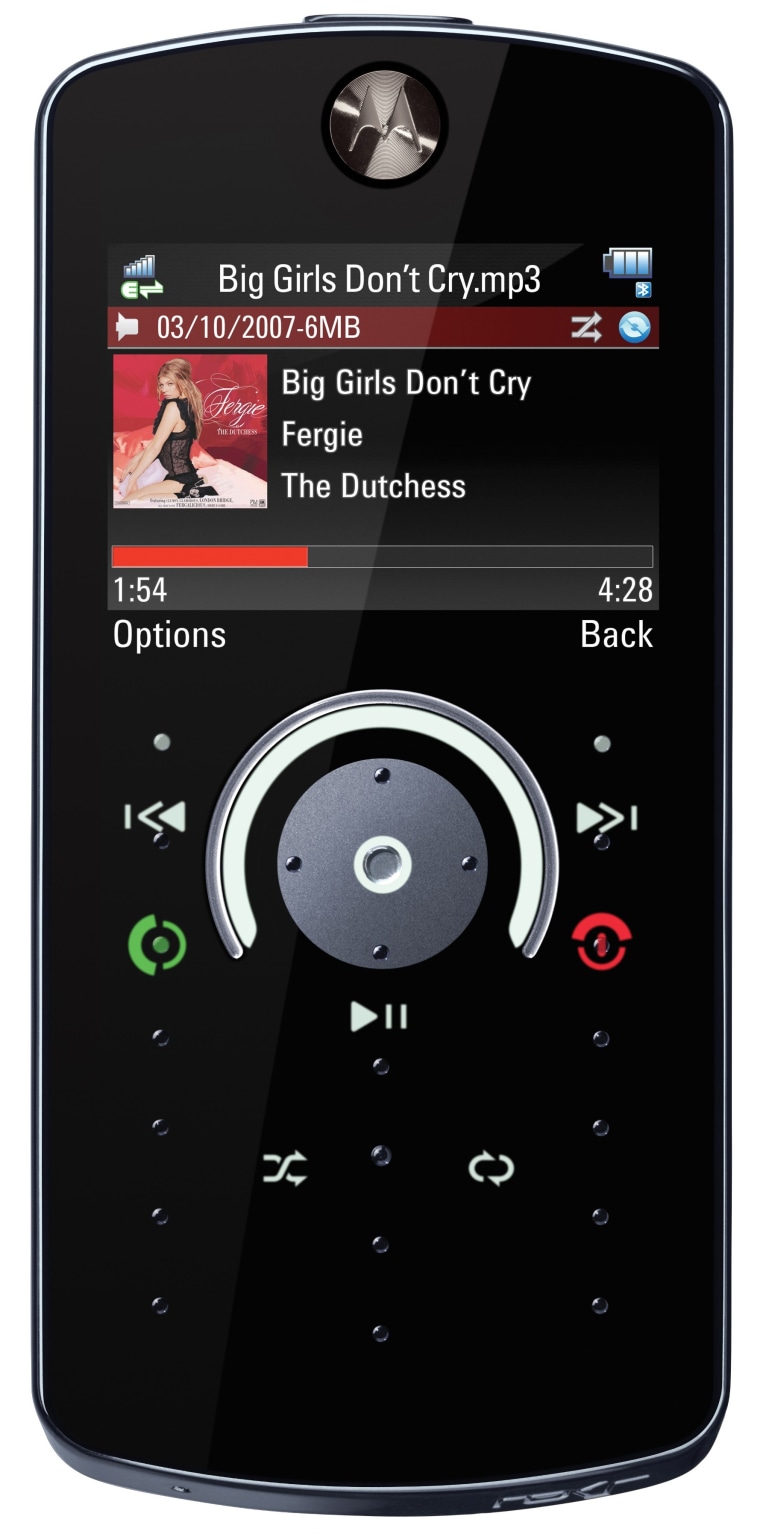Not everyone is melding their music with their cell phones, but a growing number of consumers are, with more choices than ever for finding a music phone that strikes the right note.
LG’s Chocolate music phone, a popular model, is now in its third version. Motorola’s ROKR line, Samsung’s Juke and Nokia’s 5310 Xpress Music speak volumes with their names. And, the Sony Walkman, a portable tape player, then CD player and household staple for a previous generation, continues to live on in Sony Ericsson’s Walkman line of mobiles.
One of the premier devices that is both a music player and cell phone is the iPhone, which Apple “considers the best iPod that they’ve ever made,” said Ross Rubin, director of industry analysis for The NPD Group market research firm.
While cell phone sales in general declined 13 percent in the second quarter of this year, compared to the same time last year, 65 percent of phones purchased were “music-enabled” in the second quarter of 2008, in contrast to 45 percent in the second quarter of 2007, The NPD Group said in a recent report.
“We’ve certainly seen music-capable phones on the rise, aided by features like dedicated playback control buttons, removable memory, or more integrated memory in order to store more music,” said Rubin.
Prices on such phones vary. Some, such as Samsung’s Juke, carried by Verizon Wireless, are being offered free with a two-year contract.
LG’s Chocolate 3, also at Verizon Wireless, is $129.99. The ROKR E8 is $199.99 at T-Mobile, and Nokia’s 5310 Music Xpress goes for $49.99, also at T-Mobile. The iPhone, carried exclusively by AT&T, is $199 for an 8-gigabyte model, and $299 for a 16-GB version. Both iPhone versions come with more storage than standard music cell phones, which generally come with between 1 and 4 gigabytes of storage.
For some consumers, the issue is one of convenience and convergence, melding two devices into one. With digital music players in more than half of households in the United States now, “the MP3 player market is a mature one,” said Rubin.
“We’ve really seen quite a bit of a slowdown, and more of the market is heading to less-expensive devices, those under $100 and very often with very small screens or no screens at all that consumers are using to bring to the gym, and not care if it gets knocked around so much.”
Apple, which offers a variety of iPods, may unveil a revamped lineup on Tuesday.
For some music aficionados, having a stand-alone music player is important for carrying their collection of hundreds or thousands of songs with them. The current largest-capacity iPod, for example, has 160 gigabytes.

That amount of storage can hold up to 40,000 songs, according to Apple. The current maximum storage capacity for any cell phone right now, including the iPhone, is 16 gigabytes, said Avi Greengart, Current Analysis research director for mobile devices.
“There is no standard amount of storage, but there are several phones on the market that come with 2 gigabytes of storage in the box,” and can be expanded with add-on microSD cards, he said.
“I don’t see the market for dedicated music devices going away,” Greengart said. “In most cases, cell phones that can play music are a supplement, not a supplant.”
They definitely are a good option “for people who don’t have large music collections, or for people who want to consolidate down to a single device,” he said.
Nokia’s music push
Nokia, the world’s largest cell phone maker, is aggressively pushing music phones and its online Nokia Music Store, which now serves 10 countries, including Australia, France, German, Ireland, Italy and Spain.
The company’s new “Comes With Music” service, due to launch in October in the United Kingdom, gives owners of certain Nokia phones free, unlimited music downloads for a year.
After the year is up, it will be up to users to decide whether to continue the service on a subscription basis.
A Nokia spokeswoman said it's not known when the music service will be available in the United States.
In the United States, Nokia has a smaller market presence than companies like Motorola, Samsung and LG, and bigger competition from Apple with its highly successful online iTunes Store for music downloads.
“Music as an experience is extremely important to Nokia because we know how important it is to our users from a convergence perspective,” said Ira Frimere, the company’s North American product manager for its upscale “N” series of phones.
“For Nokia it’s a matter of making it seamless for the end user, so that they can easily get music onto their devices, create their playlists, see their album art and have good-quality sound coming from the devices as well.”
There are other subscription services for music cell phones, some offered directly through wireless carriers. Verizon Wireless recently teamed up with online music service Rhapsody to offer the $15-a-month V CAST Music with Rhapsody service, which works with many of Verizon Wireless’ phones.
Music is downloaded via computer, much like iTunes, then transferred to the cell for playing.
“Music subscription services are particularly useful for people who like to explore music choices and try out a lot different things without necessarily buying them,” said Greengart.
“But if you’re not going to buy a lot of new music, a subscription is an ongoing cost, whereas if you just buy a few tracks every once in a while, that’s going to be more economical.”

Making a checklist
No matter what music phone you decide on, if you’re going to spend any significant amount of time using it to listen to your tunes, here’s some features and points you’ll want to consider:
3.5mm standard headphone jack. Not all music phones have these. The original iPhone, released last year didn’t; it had a 2.5mm jack, as does the Samsung Juke. Adapters are available. The iPhone 3G has a 3.5mm jack, as do most newer music phones.
“Even most of the BlackBerry line (of smartphones) has switched over to the 3.5mm jack, so that music can be added to the list of things you might use a BlackBerry for,” said Greengart.
Phones with a built-in FM transmitter. “In your car you can set it so that it broadcasts to an open station on your radio dial, and then you can listen to music in your car that way,” Greengart said.
More stand-alone digital music players are also coming with FM transmitters, noted Rubin of The NPD Group.
Support for stereo Bluetooth. When you really want to enjoy your music, you’ll want to hear it in stereo. And that means the phone should have the ability to connect with a Bluetooth-enabled speakers or stereo headphones — different than the Bluetooth headsets used for making hands-free calls.
“A Bluetooth headset is mono, not stereo,” Greengart said. “If your phone supports stereo Bluetooth, you can listen to your music without wires and in stereo. Most phones specifically geared toward music can do that. The iPhone is a notable exception; it cannot.”
However, he said, there are adapters that can be purchased for the iPhone that provide that function.
Music formats. Digital music comes in different formats, including MP3, WMA and AAC. Make sure the phone you want will be able to play the music you have or want to have.
Battery life. It’s a constant struggle for most cell users, so think about how much of the time you’ll be wanting to use your phone to listen to music and weigh that when making a decision.
“That’s definitely one of the concerns by consumers about music phones, running down the battery while using the phone as a music player,” said Rubin.
Ease of use and easy-to-get-to controls. Phones with dedicated music playback buttons and easy-to-navigate menus can make a world of difference, say Greengart and Rubin.
Motorola’s ROKR E8, for example, uses a touchscreen for music, so that “with one ‘press’ of the virtual music key, the phone keypad disappears, and control keys for the music player … appear in its place,” the company says.
Sony Ericsson, which recently announced three new Walkman phones, said the phones use use “Shake” control “to change tracks with the flick of your hand.”
Some things might sound gimmicky, and the best way to know what really works for you is to test phones out in the store.
“You need to consider even some little things, like how many steps does it take to change a track?” said Greengart.
“For example, if you’re listening to music, something in an upbeat, peppy mode, and then some long, slow ballad comes on and you want to skip it, do you need to open up the phone, press three buttons, hold down something else, unlock it, go into the music menu — which is three levels deep — and then hit fast forward? Or can you do it without going through all those steps?”
